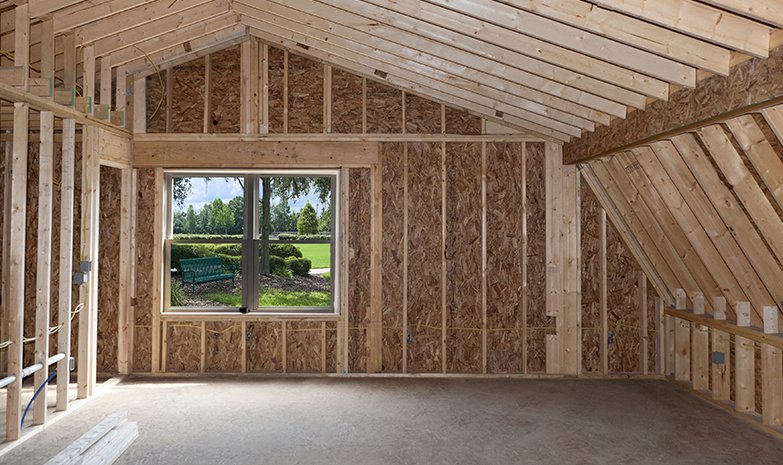
Bonus rooms and additions: Same safety measures apply
In this first of two articles, AHIT senior technical instructor Bill Ross discusses three important areas that inspectors should take note of when inspecting bonus rooms and add-ons: fire escape and rescue windows; lighting and ventilation; and garage and patio conversions.
The term “bonus room” typically refers to a room that is substandard in some way and does not meet the building code requirements for habitable rooms, such as a patio enclosure or basement conversion; a garage that has been converted to a living space; or an attic with an added room. Calling it a “bonus” room” is a way of saying that it creates an added feature to the property, while not being included in the listing as a bedroom, living room, or family room. Appraisers typically disregard such rooms in arriving at the assessment of the property.
A habitable room is considered one where you live, eat, sleep and cook. Bonus rooms and additions should be inspected for the same issues of safety and habitability as the rest of the property. The fact that a room has been represented as non-conforming does not mean that it will not be used in exactly the same way as a habitable room. Key considerations are fire, health, and safety issues; fire separation from the garage; fire egress; natural lighting and ventilation; and a heat source required for each habitable living space.
Although home inspectors do not perform code inspections per se, the basis for building codes is always related to fire, health, safety, as well as structural issues. Inspectors must know the basic codes in order to determine whether there are fire, health, safety or structural issues present in the home.
Fire escape and rescue windows
One of the first considerations with any room that may be used for sleeping purposes is to inspect for a secondary means of escape or rescue. In addition to the main entrance to the sleeping room, there must a second window or door opening to the exterior that is operational. It cannot be painted shut, nailed shut, or the like. Window sills should not be higher then 44 inches off the floor. Window net openings must be a minimum of 5.7 square feet clear opening, with a minimum width of 20 inches and a minimum height of 24 inches. The 24 inches in height was designed to allow enough room for a fireman to enter with an oxygen pack on his back.
Inspectors should check for improperly installed security bars on bedroom windows (most are bolted to the exterior framing) because this prevents any means of fire egress. There is a quick-release bar that is approved for emergency release that requires no tools: just pull, push or turn the knob and the bars swing open. Inspectors very seldom find these auto release mechanisms installed.
Lighting and ventilation
Aside from egress, windows and or skylights are required for natural light in a habitable room. Most codes require glazed openings to be a minimum of 10 square feet or 10% of the floor area, so lighting is required. Natural ventilation is also required. Habitable rooms must have at least four percent of the floor area or five percent and five square feet. (This may vary by code. Every home inspector should have a copy of the latest code check books to use as a reference when performing home inspections.)
Garage and patio conversions
Most codes require a garage with each home. Homeowners will sometimes convert that garage into a living space, which may prove problematic. Garage slabs normally do not have a vapor barrier under the slab which can result in moisture problems, dry rot and possibly mold. Also, the owner may have cut a door into the home from the garage that enters a bedroom. This is a safety hazard because fire doors can never be cut into a bedroom. Even If the door has an auto closer on it, it still cannot be cut into a bedroom fire wall. If the room is being used as a bedroom regardless of it having a closet or not, it is still considered a bedroom. A hole cut into the attic from the garage is also never allowed. You are never allowed to cut through a fire wall.
Another common conversion area is the patio. Similar to garage conversions, moisture is a potential problem. Patio conversions might also block the fire escape or rescue window leading from a bedroom window. The addition could also block the natural light and ventilation requirements that were installed when the home was built.
In addition to the aforementioned problems, most of these non-permitted additions typically include improperly installed electrical wiring — which presents another safety hazard — and normally lack a permanent heat source.
In part two, we’ll discuss what to look for with attic conversions, heat sources and decks.
Bill Ross is a senior technical instructor for the American Home Inspectors Training Institute. He is a long-time member of the American Society of Home Inspectors (ASHI®), California Real Estate Inspectors Association (CREIA), NAHI, IAEI, ICBO, and is a professional environmental inspector. Ross also served on the board of directors for the National Association of Home Inspectors (NAHI).




